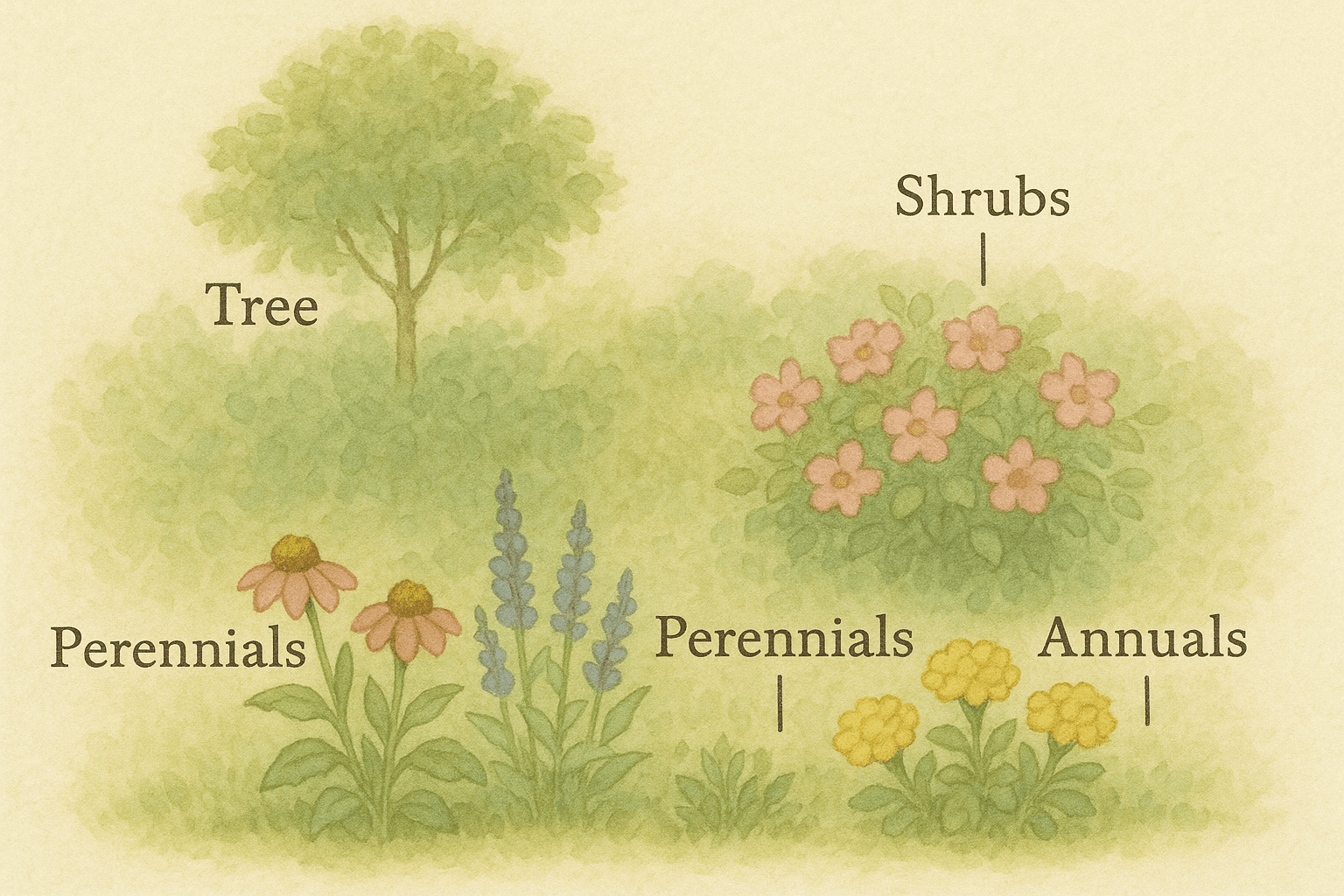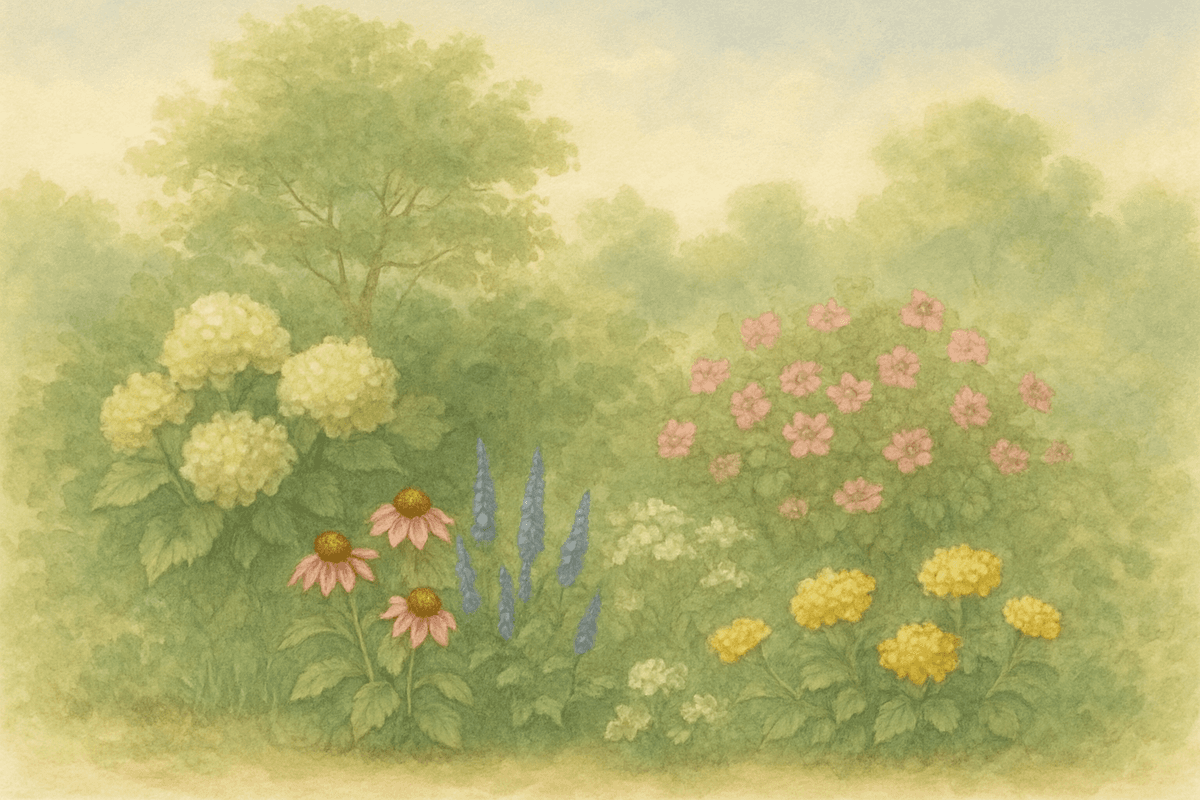Designing a Border with Trees, Shrubs, Perennials & Annuals
Every garden, no matter how big or small, needs a little rhythm — tall things and small things, plants that stay and plants that come and go.
Think of it like composing a song in green: trees hum the deep notes, shrubs play the steady chords, and perennials and annuals dance on top in melody and color.
When these four plant groups come together, they turn a bare patch of earth into a living border that changes with every season.
Trees — The Guardians
Trees are the quiet guardians of the garden. They lend height, shade, and a sense of age — even when newly planted.
A small ornamental tree, like an Acer or a Crabapple, can anchor a border beautifully. Their branches break the sky and make the rest of the garden feel sheltered.
I always think of trees as the bones of the garden — not loud, but always holding everything together.
Tips:
Choose light, airy trees for small gardens — their dappled shade lets underplantings shine.
Plant them where the evening light can slip through their leaves — that’s where they look most magical.
Shrubs — The Steady Companions
Shrubs are the reliable friends that fill the middle ground — they bring shape and structure when everything else dies back.
A row of hydrangeas, a mound of spiraea, or even a few boxwoods can knit a border together and soften sharp edges.
Tips:
Mix evergreens and deciduous shrubs to keep interest year-round.
Prune gently — a well-shaped shrub is like a good haircut, subtle but transformative.
Perennials — The Returners
Perennials are the plants that come back year after year — faithful and familiar. They’re the ones that make you smile when they poke through in spring, saying, “I’m back!”
Think echinacea, salvia, rudbeckia, geraniums, and hostas — they bring rhythm and softness to your planting.
Tips:
Plant in generous drifts or clusters for a natural feel.
Leave seed heads standing through winter — they sparkle with frost and feed the birds.
Annuals — The Joymakers
Annuals are the playful guests of the garden party. They arrive full of color, bloom their hearts out, and bow out before winter.
Cosmos, zinnias, and nasturtiums add instant charm, filling any empty space with personality.
Tips:
Use annuals to experiment — try bold colors or whimsical combinations.
Replace them each season for a fresh palette, like changing your cushions for spring.

Every border tells a little story: the wise tree at the back, the gentle shrubs keeping watch, the perennials returning faithfully each year, and the annuals bursting in for one joyful season.
Bringing It All Together
Designing a border is like arranging a stage:
Back row: Tall trees and shrubs to give height and backdrop.
Middle row: Medium perennials and flowering shrubs for texture.
Front row: Low perennials and annuals to soften the edge and draw the eye in.
Think in layers and seasons — what will bloom when? what will stand tall in winter? what will hum quietly beneath the summer buzz of bees?
If you get the bones right, the rest will find its rhythm.
The Living Border
Borders never stay still — and that’s the magic of them. Plants spread, reseed, surprise you, and sometimes vanish altogether.
But over time, the whole border begins to feel like a single living thing — growing, shifting, and breathing with the seasons.
The best gardens aren’t built all at once; they grow with you — one leaf, one season, one quiet afternoon at a time.
Enjoying this post?
If you love the whimsy and want to support more PNW garden guides, you can buy me a coffee.
🌼 Buy Me a Coffee


